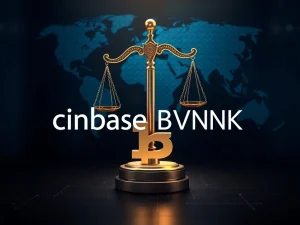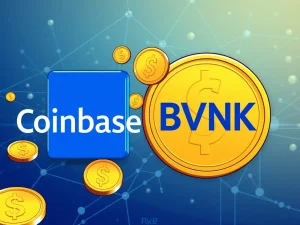Unlock DeFi’s Potential: Fixed Income – The Secret Weapon for Institutional Adoption

Is Decentralized Finance (DeFi) on the cusp of a major breakthrough? According to Treehouse CEO Brandon Goh, the answer might lie in a seemingly traditional financial instrument: fixed income. In a recent episode of Hashing It Out, Goh articulated a compelling vision where fixed income becomes the crucial element, the ‘missing link’, needed to propel DeFi into the mainstream, particularly among institutional investors. Let’s dive into why this could be a game-changer and what it means for the future of crypto.
The Untapped Power of Fixed Income in DeFi
For those unfamiliar, fixed income in traditional finance refers to investments that provide a predetermined return over a set period. Think bonds, certificates of deposit (CDs), and other debt instruments. These are often seen as lower-risk investments compared to equities, offering stability and predictable cash flow. But how does this translate to the dynamic world of DeFi?
In DeFi, fixed income concepts are being reimagined through lending and borrowing protocols, stablecoin yield farming, and tokenized bonds. The allure for institutions is clear:
- Predictability in a Volatile Market: DeFi is notorious for its price swings. Fixed income instruments can offer a haven of relative stability, providing predictable returns even amidst market turbulence.
- Lower Risk Profile: Compared to the often speculative nature of many crypto assets, fixed income strategies can present a more conservative entry point for institutions wary of extreme volatility.
- Familiarity Breeds Comfort: Institutions are deeply familiar with fixed income in traditional finance. Bringing similar structures into DeFi can lower the barrier to entry and make the space more approachable.
Brandon Goh emphasizes that this familiarity is key. Institutions understand fixed income; it’s a language they speak fluently. By integrating these instruments into DeFi, we’re essentially offering them a bridge into this innovative space, built with materials they already trust.
Why Institutional Adoption is the Holy Grail for DeFi
While DeFi has witnessed explosive growth in recent years, attracting billions in value, it still largely operates on the fringes of mainstream finance. Institutional adoption is widely considered the next major leap required for DeFi to truly mature and reach its full potential. Why is this so important?
- Massive Capital Inflow: Institutions manage trillions of dollars globally. Even a small allocation to DeFi from these giants would inject immense liquidity and capital into the ecosystem, fueling further innovation and growth.
- Increased Legitimacy and Stability: Institutional participation can bring a sense of legitimacy and maturity to DeFi, reducing the perception of it being a Wild West. Their involvement can also contribute to greater market stability over time.
- Broader User Base: Institutions serve a vast network of clients, including pension funds, insurance companies, and endowments. Their entry into DeFi could indirectly expose millions of individuals to the benefits of decentralized finance.
However, institutions haven’t exactly rushed into DeFi. What’s holding them back?
The DeFi Challenge: Bridging the Gap for Institutions
Despite the immense potential of DeFi, several hurdles have prevented widespread institutional adoption:
- Volatility Concerns: The inherent volatility of cryptocurrencies remains a major concern for risk-averse institutions. They need investment options that align with their fiduciary responsibilities and risk management frameworks.
- Regulatory Uncertainty: The regulatory landscape for DeFi is still evolving and often unclear. This ambiguity creates compliance challenges and legal risks that institutions are hesitant to navigate.
- Lack of Institutional-Grade Infrastructure: DeFi infrastructure is still maturing. Institutions require robust security, custody solutions, and compliance tools that meet their stringent standards.
- Complexity and Novelty: DeFi can be complex and unfamiliar to traditional finance players. The learning curve and the need to adapt to new paradigms can be daunting.
These challenges are significant, but they are not insurmountable. This is where the strategic implementation of fixed income instruments becomes incredibly relevant.
Fixed Income: DeFi’s ‘Missing Link’ to Mainstream Finance
As Brandon Goh suggests, fixed income could be the ‘missing link’ that effectively addresses many of the institutional concerns surrounding DeFi. Here’s how:
- Mitigating Volatility: Fixed income instruments, by their nature, are designed to be less volatile than pure cryptocurrency assets. They can provide a buffer against the extreme price fluctuations that deter institutions.
- Creating Compliant Pathways: Well-structured fixed income products in DeFi can be designed to align with certain regulatory frameworks, making them more palatable for institutions operating under strict compliance requirements.
- Building Familiar On-ramps: By leveraging the familiar framework of fixed income, DeFi can offer institutions an easier and more comfortable entry point. It’s a step towards bridging the gap between traditional and decentralized finance.
- Diversifying DeFi Offerings: Introducing a wider range of fixed income options diversifies the DeFi ecosystem, making it more attractive to a broader spectrum of investors, including those with more conservative risk appetites.
Examples of emerging DeFi fixed income strategies include:
- Tokenized Bonds: Representing traditional bonds on the blockchain, offering increased transparency and accessibility.
- Stablecoin Lending and Borrowing: Platforms offering fixed yields on stablecoin deposits, providing a relatively stable return in the DeFi space.
- Yield Farming with Fixed-Term Lock-ups: Protocols offering higher yields for locking up assets for a fixed period, resembling term deposits in traditional banking.
Navigating the DeFi Fixed Income Landscape: Key Considerations
While the potential of fixed income in DeFi is immense, it’s crucial to acknowledge the inherent risks and challenges:
- Smart Contract Risk: DeFi protocols rely on smart contracts, which are susceptible to bugs and vulnerabilities. Institutions need robust security audits and risk assessment frameworks.
- Impermanent Loss: In some DeFi fixed income strategies, such as liquidity providing, impermanent loss can erode returns. Understanding and managing this risk is essential.
- Regulatory Uncertainty (Still Present): While fixed income can offer compliance advantages, the overall regulatory landscape for DeFi remains fluid. Ongoing monitoring and adaptation are necessary.
- Yield Sustainability: High yields in DeFi can sometimes be unsustainable. Institutions need to assess the long-term viability of fixed income opportunities and avoid chasing unsustainable APYs.
Actionable Insights for Institutions Exploring DeFi Fixed Income:
- Start with Education: Thoroughly understand the nuances of DeFi and fixed income strategies within this space.
- Begin with Pilot Programs: Test the waters with small, controlled investments to gain practical experience and assess risks.
- Prioritize Security and Due Diligence: Conduct rigorous security audits of protocols and platforms before deploying capital.
- Engage with DeFi Experts: Partner with firms and individuals with deep expertise in DeFi to navigate the complexities effectively.
The Future is Fixed: DeFi and Institutional Finance Converge?
The vision of fixed income as DeFi’s ‘missing link’ is compelling. It offers a pathway to bridge the gap between the innovative world of decentralized finance and the established realm of institutional investment. By incorporating familiar and trusted instruments like fixed income, DeFi can become more accessible, stable, and ultimately, more impactful on the global financial landscape.
As the DeFi ecosystem continues to evolve and mature, the strategic integration of fixed income is poised to play a pivotal role in unlocking its full potential. It’s not just about attracting institutional capital; it’s about building a more robust, sustainable, and inclusive financial future. The journey is just beginning, but the destination – a DeFi landscape where fixed income plays a central role – looks increasingly promising.







